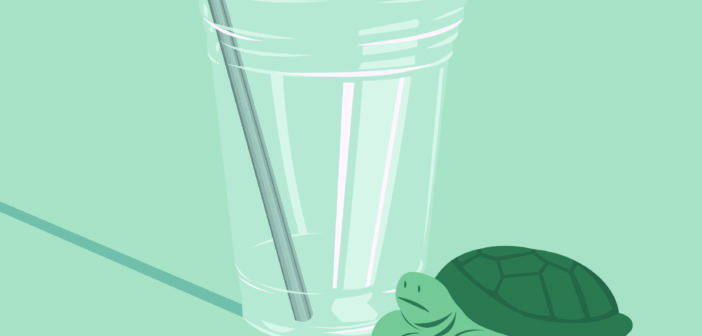The Earth is dying.
Recent reports from the International Panel on Climate Change, the most trusted body of climate scientists, reported we have only 12 years to institute massive global change to avoid a 2.7 degrees fahrenheit global temperature increase.
A heightened sense of urgency to address the climate crisis has led to waves of six million young people across the globe participating in unprecedented climate strikes, according to The Guardian. People from all over the world are calling for change, but the question remains: What are we changing and how?
With marches claiming mainstream news headlines, being an environmentalist has become synonymous with a quality of character. These days, anyone who is anyone is trading in their plastic straw for a metal one and grabbing their Sharpies and picket signs to take to the streets. But just how big is the problem?
Simply stated: huge. The rate at which we currently consume and pump greenhouse gases into the atmosphere is higher than it has been in 800,000 years, said the National Oceanic and Atmospheric Administration.
In the U.S. alone, the EPA reports the average person produces 4.4 pounds of personal waste per day. Average that figure over a year and that’s over 1,600 pounds of used shampoo bottles, milk jugs and non-recyclable Starbucks cups. Note that these numbers only include items thrown away, omitting the staggering amount of waste generated to produce it all. Every good we consume requires energy, which is almost always derived from fossil fuels.
Whether it be the Chinese factories that manufacture your Amazon orders or the cargo ships that move them across oceans, it all plays a role. The quantity of consumer consumption is directly connected to the current climate crisis. If the mentality toward consumer goods continues to be “consume and discard,” there’s a troubled future ahead.
Our consumer mentality leads us to accept disposability as a norm, as “we take disposability for granted in lots of ways that other countries do not,” said Erin Bergren, visiting assistant professor of environmental studies.
“It involves us changing our attitudes towards disposability. Disposability should be a rare, special exception, it should not be a norm … We just take disposability for granted and that’s lazy, and not inevitable in any way.”
As this theoretical solution to waste continues to permeate popular culture, it garners enormous attention from people who want to reduce their impact.
With this international spotlight on protecting the planet, the novice environmentalist is subject to a plethora of unsolicited Facebook posts and lifestyle blogs about where to begin. These solutions are often complex and require significant behavioral changes. This leads many to shoot for the low hanging fruit.
Enter: the VSCO trend. For those that aren’t up to date on the lingo, the VSCO aesthetic is what NBC’s Kalhan Rosenblatt describes as “the latest teen iteration of ‘preppy’ style with a casual beach-inspired flair.”
The VSCO look is never complete without a Hydroflask and metal straws to “save the turtles,” two identity pieces that explicitly communicate environmental consciousness.
The VSCO identity is fascinating not because of what it is but what it represents. The reusable $40 water bottle and metal straw represents a community within America’s society that wants to reduce its impact on the environment but remains brainwashed to consumer culture.
They strut down the hall with their trendy reusable Starbucks cups, zero-waste kits and bamboo toothbrushes. Tossing fast-fashion items and collected to-go containers in the trash, they order new, environmentally friendly products to be shipped to their houses. Old belongings are thrown out for new ones, making these people feel as though they are doing their part.
But the truth is that when taking into account the fossil fuel energy and raw materials used to produce all of these new “environmentally friendly” products, it is inadvertently detrimental to the entire cause.
Our consumer minds have been trained to focus on “recycle” over “reduce” and “reuse” because of all the products we continue to collect. We put our trust into companies that often promote or capitalize on environmentally friendly products. Izel Michel, ‘20, knows better than to fall for these company tactics: Buy now, recycle later.
“It’s a double-edged sword promoting (environmentally friendly products) because on one hand, (companies) want to say we care about our customers,” said Michel.
But these companies target willing customers in order to gain more profit.
“You want to give people opportunities that are accessible and that they feel rewarded when they do it,” said President of Green Scene Anna Halverson, ’20.
For example, “The $40 Hydroflasks are exploiting their own green credentials, water bottles do not need to cost $40,” said Bergren.
Instead of falling for consumer traps, what can individuals do to participate in the environmental movement? The solution is to reduce, reduce, reduce, then reuse and recycle. This movement is about repurposing old Tupperware, not throwing them out for shiny new stainless steel to-go containers. It’s about repurposing old clothes, not buying a brand new, yet sustainably made, $300 sweater.
The movement celebrates those small successes without losing sight of more pressing issues like fossil fuel energy and the mass production of meat, two large contributors to greenhouse gas emissions.
“If environmental friendly choices are presented to us as the obvious thing, the default, people will change their behaviors. But those decisions have to be made on a collective level, on a social level,” said Bergren.

